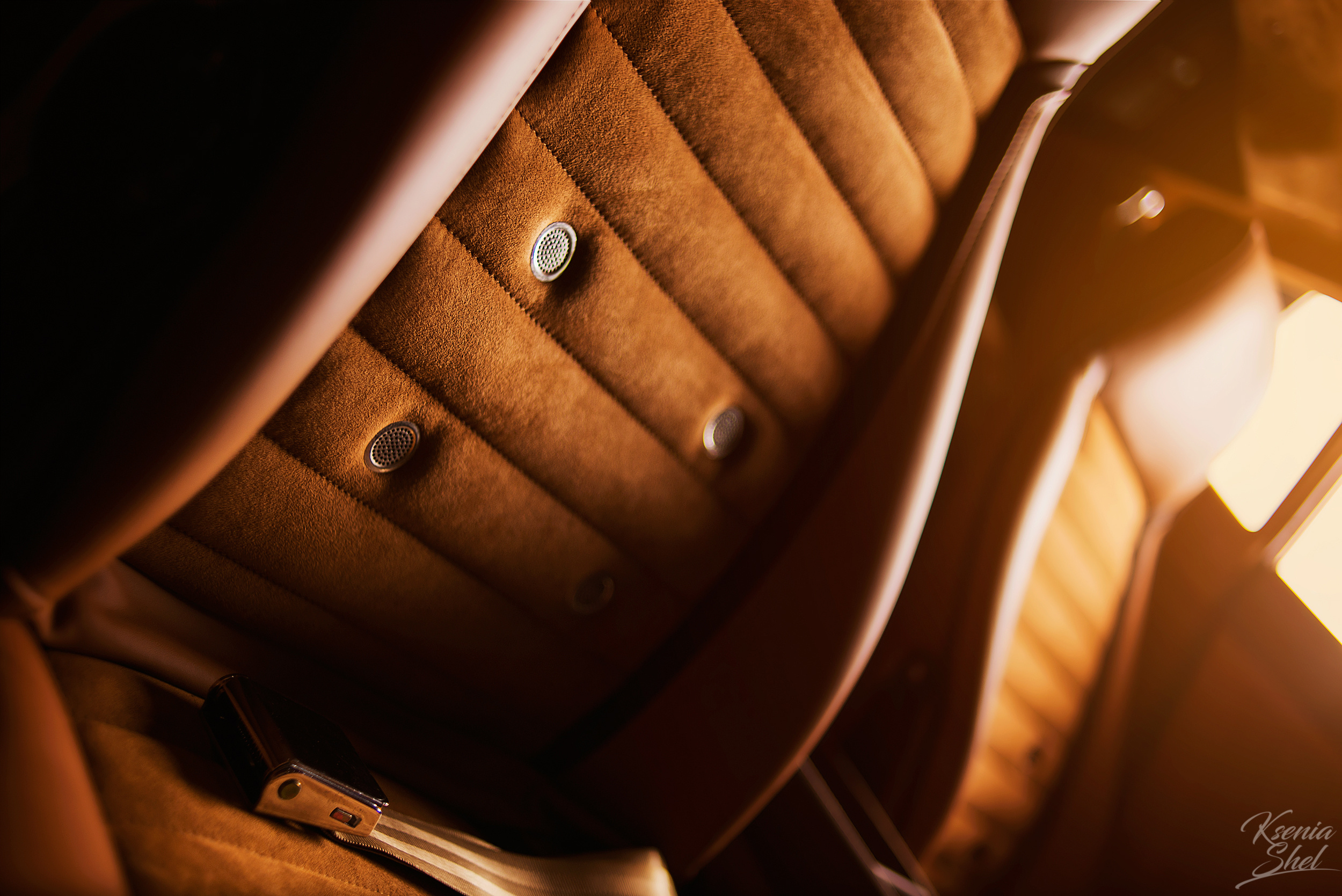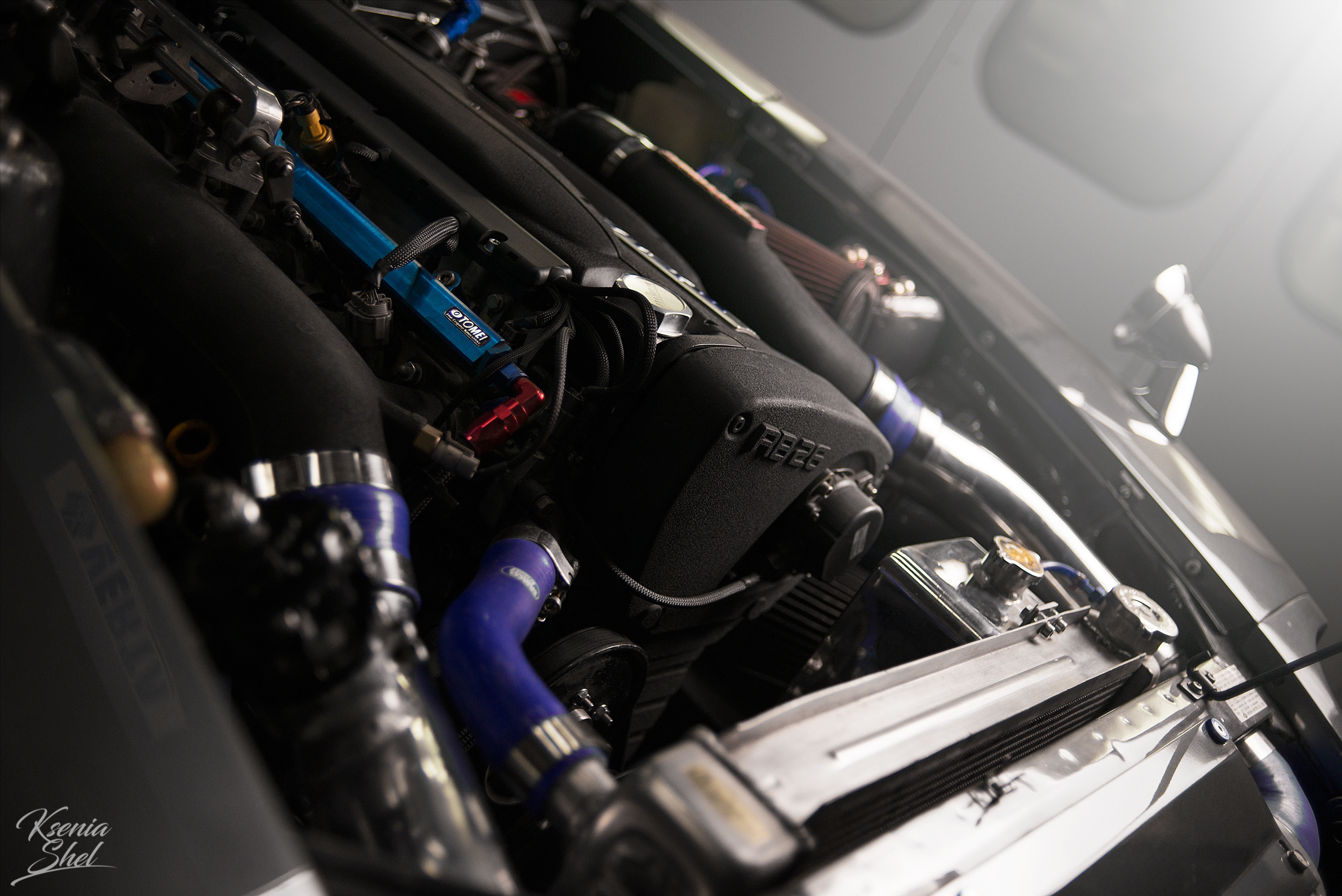
Owner: Alexey Ilukhin
Garage: Cusworks
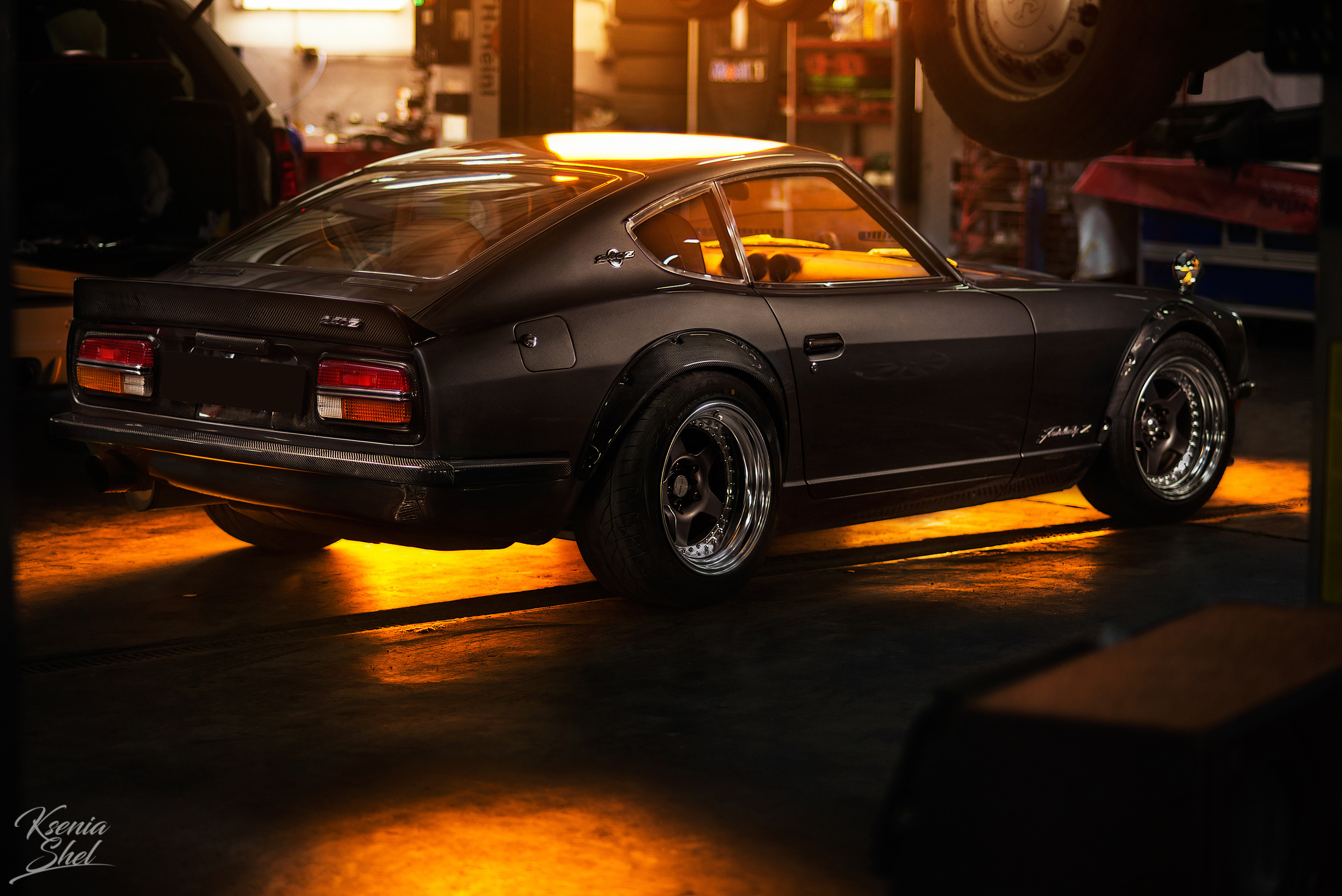
History of the Car
Before we turn to the project of Alex, I would like to briefly plunge into the atmosphere of 70 years. What started the story of a Fairlady | Datsun 240z?
During the Second world war the Japanese Nissan has severely damaged his reputation in the automotive market of the United States, because virtually all military equipment stamped with the logo of Nissan. It served as a reminder of those difficult years, and the only sure way out of this situation the Japanese have chosen to produce cars under a different brand, namely Datsun.

The ancestor is the model Fairlady, and more specifically, Sports 211 1959 model year for the United States, which is not particularly well received by the market. After all, the average American, who likes power and comfort, were bored with these cheap and devoid of embellishment Japanese cars.
On the basis of the statistics Nissan under the leadership of designer Yoshihiko Matsuo, designers Sue Kiba and Akio Hosoda, engineers Tsuneo Benitani and Hidemi of Kamagara released their first Datsun 240z in 1969.


Price category of the car is very interesting: this car costs about 3500$. And for example the Mustang's price was about 6500$ in 1969. In the price category unequivocally 240z won at all sports cars of that time, such as: Ford Mustang, Chevrolet Camaro, Porsche 911, Jaguar E-type. But not only the price was the deciding factor.
In fact, 240z can be called uncompromising coupe, coupe for egoists with incredible weight distribution - the driver and passenger sit almost on the rear axle.
Under the hood of a 240z was standing inline 6-cylinder L24 engine with two carburetors Hitachi, which at the time had crazy power - as much as 150 horsepower under the hood, and water cooling. Coupe weighed just 1 068 kilogramms. To 100 km/h car disperses in 9 seconds and a top speed exceeding 200 km/h. The consumption of fuel per 100 kilometres was within 11 liters. This was the reason for the successful sale of this car.
In the first two months were sold out the entire quota of 3000 cars, and only sold about 150,000 copies. 240z has deservedly become the most popular coupe on the North American market.

This success in the sale were as follows: first, the engine second, its consumption and third, the Japanese have turned out to foresee the looming oil crisis in the United States in 1973.
Many foreign journals were full of headlines with Datsun. Particularly good was the article entitled "A new kind of economy car".

The first car was built exclusively mechanical 4-speed transmission, only later began to produce the choice with an automatic transmission. Look a little to the specification of this model in 1969:
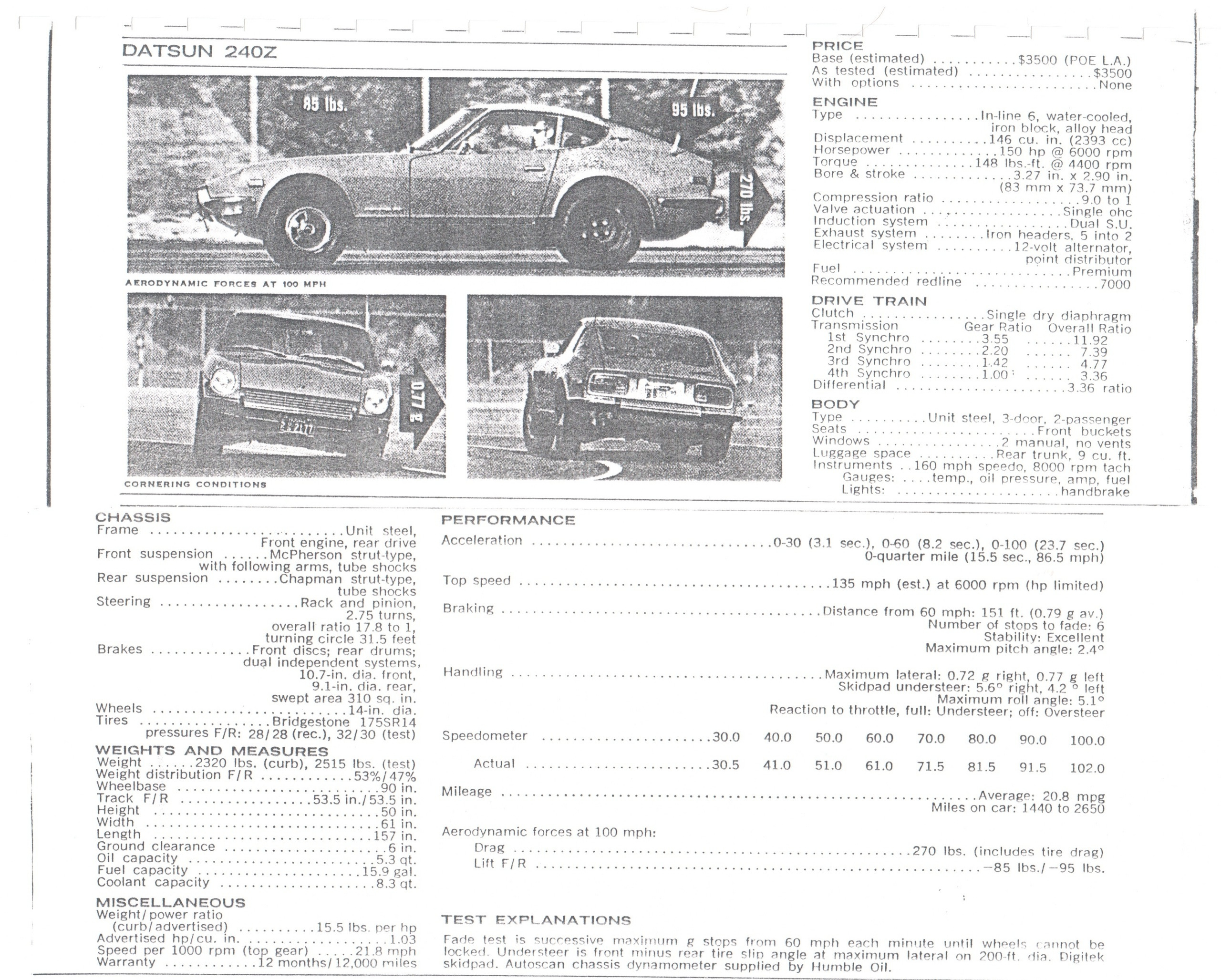
This model is finished to be produced in 73. On the 260z and then the 280z/280-ZX.
But in General, the "First generation" finished issue in 1978.
If we talk about this kind of motor sport as a Rally in 70 years of the 240z was a great success! On these models won the Safari Rally in East Africa Edgar Herrmann in 1971, and Shekhar Mehta in 1973.

In 2004, the magazine "Sports Car International" awarded the 2nd place Datsun 240z in the list of the most important sports cars of the 70-ies.
The project idea
The Foundation of the idea of the project was children's dreams and memories.
«Probably like every boy had a toy car which probably hadn't a certain sense at the time, because no one understood, all of them was sportive, it was like that for me too»
The Idea of the project appeared only when Alex became the full owner of this car in 2014. By this time he developed a strong enough base, consisting of knowledge, skills and capacity to implement this project.

The history of Alex's car
The car starts Its very rich history since its birth in Yokohama, Japan. Car is bright red, with an engine of 2.4 liter, dual carb, a real "sweetie". Like all export cars, it was sent to US. Then by coincidence she goes to the Netherlands to one collector.
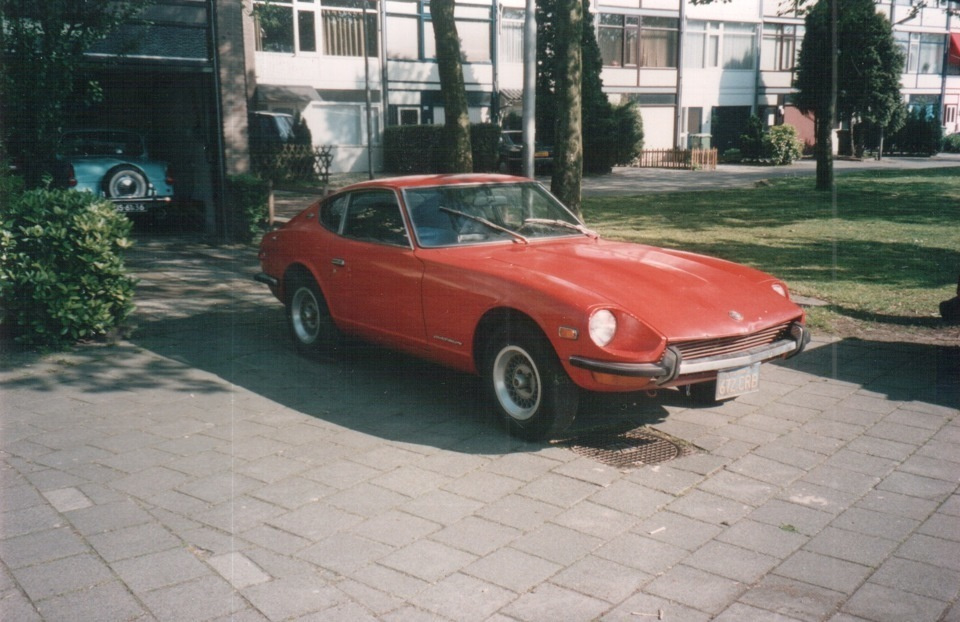

Further events unfold in 1996, when a car allegedly subjected to a complete restoration. So the owner decides to change the car color to gray. Then the car is put in garage storage, and later laid out the announcement of the sale on a foreign website.


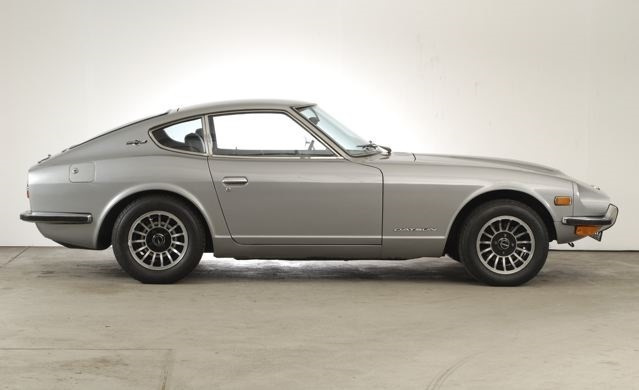

And once in sight of Alex accidentally go that same selling ad of this Datsun 240z. And he without much thought, buy it. The main reason for the purchase was more or less "live" body and a fairly attractive price, because the car at that time was already 44 years old.
After buying a car Alex gets a lot of old magazines, promotional brochures, some of which I want to share. Like fully return to those days, 70-s, retrospective.


The making of project
Alex always imagined the "Fairlady" with a RB26DETT engine. He noticed this swap in various Japanese magazines. But to be honest: it would be possible to leave the stock engine, but what to do with spare parts, which hard to find? So the question Alex asked before the start of construction of the project. Therefore, he decided to put the RB26DETT and retreat was already too late! But about the engine swap we will talk a bit later.
When Alex saw the car for the first time after purchase, without tears it was hard to watch.
«Yes, I miscalculated the condition of the body, at that time it seemed to me that the car is in perfect condition. The photos I had receive, the happiest Dutchman's face which shows how they care about it, put anti-corrosion coating, but in fact has turned out what happened»

The paintwork was worse, when removing the interior was that the floor long ago ceased to exist, all ate the rust, and these areas were quite a lot: wings, hood, Luggage compartment.
«There's even appropriate to joke about soft floors and Flintstones - floor was a layer of sound insulation and gravel coating»
But jokes aside! Body work was planned quite a lot. Was welded a large number of iron sheets of various shapes and sizes in various places. Fully align all the details. The color was chosen almost immediately - Daytona Grey, pearl color famous brand Audi, which fits perfectly with the concept of the project.



Since the 70s anyone didn't particularly bothered with the noise, Alex wanted to compensate this disadvantage, get rid of the feeling of being inside a tin can. Gaze fell on the STP brand. It was lined with 3 layers of sound insulation for roof, floor, doors, trunk floor, engine shield, rear arches and rear wings.

The engine and transmission
But this complexity is not over. When you open the hood it seems that in the engine compartment a lot of space, but it just seems.
The difficulty was that Datsun has a full mirror reflection of the subframe and steering rack, if you compare with the newer Nissan. Such a surprise of course was very unpleasant. Had to buy the expanded sump and transferred oil receiver from the United States. Then was installed the RB26DETT along with 34 GT-R's transmission.


Unit Haltech Pro manages underhood space, designed especially for BNR 34. All wiring custom.

Suspension
Suspension is fully custom, ordered again from the United States. "Arizona Z car" is the company, though of course it is not a company. This is the grandfather of 60 years, who was able to create a business born from the love of "Fairlady" and his technical and engineering knowledges. He created an aluminum suspension, which allows you to adjust almost all settings. All suspension hinge joints - stood as a native, without modifications.

Rims and brake system
Rims were chosen almost immediately, without the long days and nights of searching. When the company announced the Work Meister CR01 wheels, on their brochure they posted a picture of the 240z just on those wheels. Alex said, "I want those rims!". So he chose a 16 diameter with a width of 8.5 front and 9.5 rear. Brake system by Wilwood 13" rotors with notches with a conversion kit to transition to the 5 hairpins. I want to note that the drain back were drum brakes.
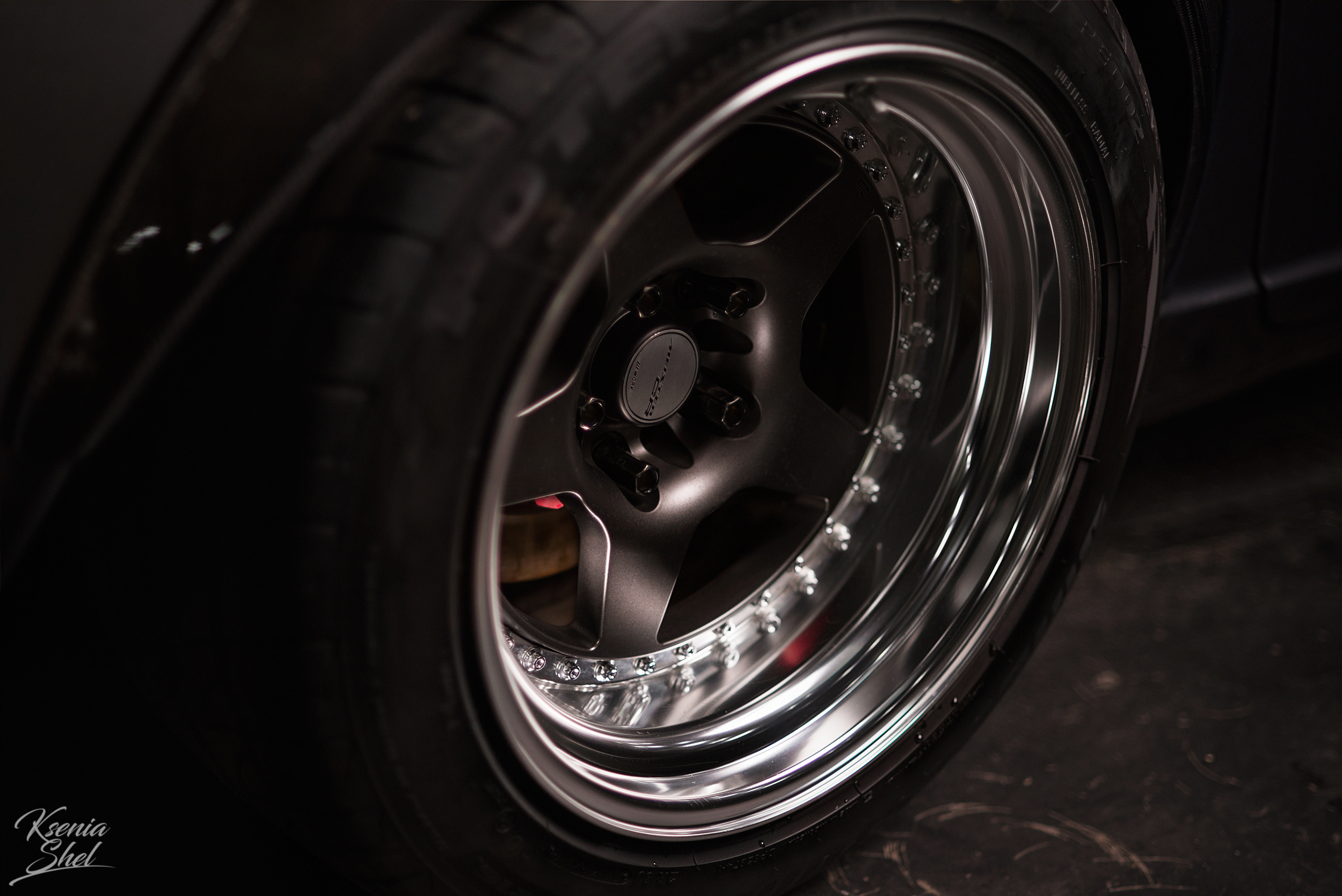
Interior
The interior is completely altered, but Alex didn't want to change any line and left completely original form, as intended by the designer. Rear shelf are complemented by belts, which gives a special vintage feel.


A few words about the dashboard. As it was completely original panel, so Alex had to think what to do with the sensors and the speedometer and tachometer.
«To put the sensors from all known firms Defi was impossible. They don't making custom. The Defi products are working like a clock, and clearly show all the parameters with minimum error, but I simply have nowhere to put them. So, I started looking for alternatives and found a way out of this situation again in America!»
There is such a small company Speed Hut, which is engaged in manufacturing of custom sensors. There Alex ordered the sensors of a certain size, as well as the tachometer and speedometer, wich are perfectly suitable to the dashboard.

But there's another problem: how the speedometer will works? 34 transmission has electronic speed sensor, but where can we plugging it in the car from 70-s? That's right - nowhere, because there was a rope. A solution to this problem was the installation of a GPS sensor. Of course there are certain disadvantages in this system - it doesn't work at underground Parking lots and tunnels, but at least shows speed. For the center console were the selected sensors "Booost", oil pressure and water temperature.


Exterior
Carbon!
In the United States Alex ordered the front and rear bumper, lower lip, ducktail. In Russia have already been made overfender, frame for headlights, the middle part for the number plate and covers for mirrors. The maximum customized carbon fiber color, texture to one that was ordered in US.



What do we have finally?
Finally we have Incredible attention to detail project made in 2 years with its rather interesting challenges during assembly and swap. Lovely appearance, as if the car just left the assembly line. Concise carbon inclusions and rims Work Meister CR01 is combined with the concept of the project. Salon deserves, of course, some praise. If to speak about power, the car produces 400 horsepower and 460 Newton metres.
You can view all photos at album Fair Lady Z
The list of Modifications
Engine
- RB26DETT from BNR34;
- Mechanical transmission RB25DET from ER34;
- Exhaust manifold 2,75″ by Cusworks;
- Сatalyst by Magnaflow;
- Cardan by Cusworks;
- Differential support by Cusworks;
- Differential R230;
- Aluminium oil pan by McKinney Motorsport;
- Engine mounts by McKinney Motorsport;
- Cooling radiator by McKinney Motorsport;
- Front mount intercooler by CXracing;
- Oil cooler by HKS;
- Intake by AEM;
- Injectors NISMO 600cc;
- Fuel rail with two-way flow by Tomei;
- Fuel regulator by Tomei;
- Wiring Cusworks;
- Control block Haltech PRO;
- Lambda by AEM; Software by Powerd by Moshny;
Brake system
- Front: 6 piston Big brake kit by Wilwood;
- Brake rotor with notches for 16″ by Wilwood;
- Rear: 4 piston Big brake kit by Wilwood;
- Handbrake caliper by Arizona Z car;
- Reinforced brake manifold by Goodridge
Suspension
- Suspension by Arizona Z car
Interior
- Full tailored salon;
- Custom sensors by SpeedHut;
- Car receiver by Retrosound, retro stylized
Exterior
- Full body prepairing and painting by Cusworks;
- Colour AUDI Daytona Grey;
- Front lip by 7Carbon;
- Front/Rear bumpers by MZ;
- Rear front position lamps by 7Carbon;
- Extenders by JapCust with carbon fiber application by SantaPod;
- Duck tail 7Carbon;
- Front Rims WORK Meister CR-01 16X8,5″ ET-34;
- Rear Rims WORK Meister CR-01 16X9,5″ ET-34
Blog

BMW E46 Sitbelow 2k17 Edition

The Listva 2018

The Listva 2017










